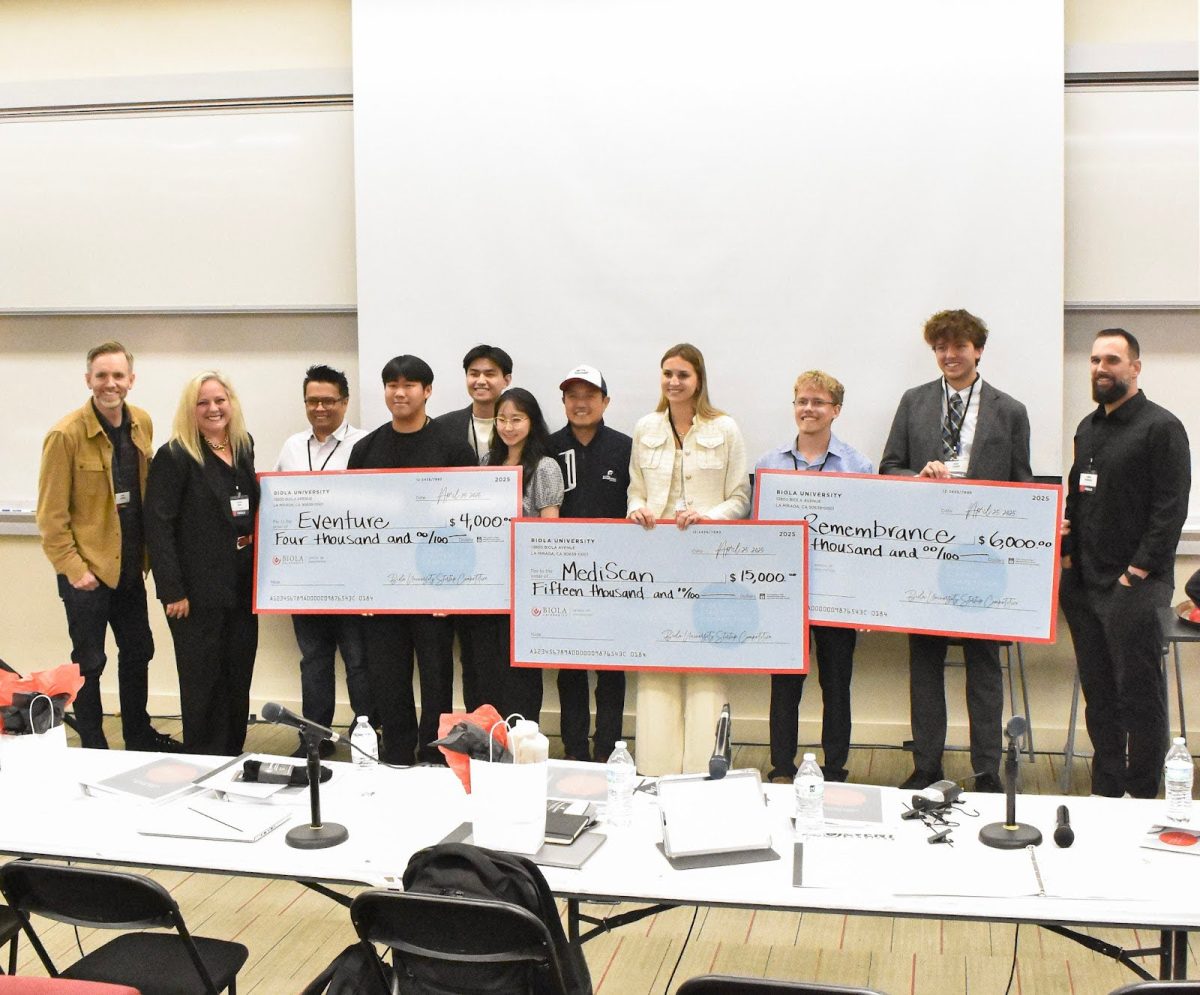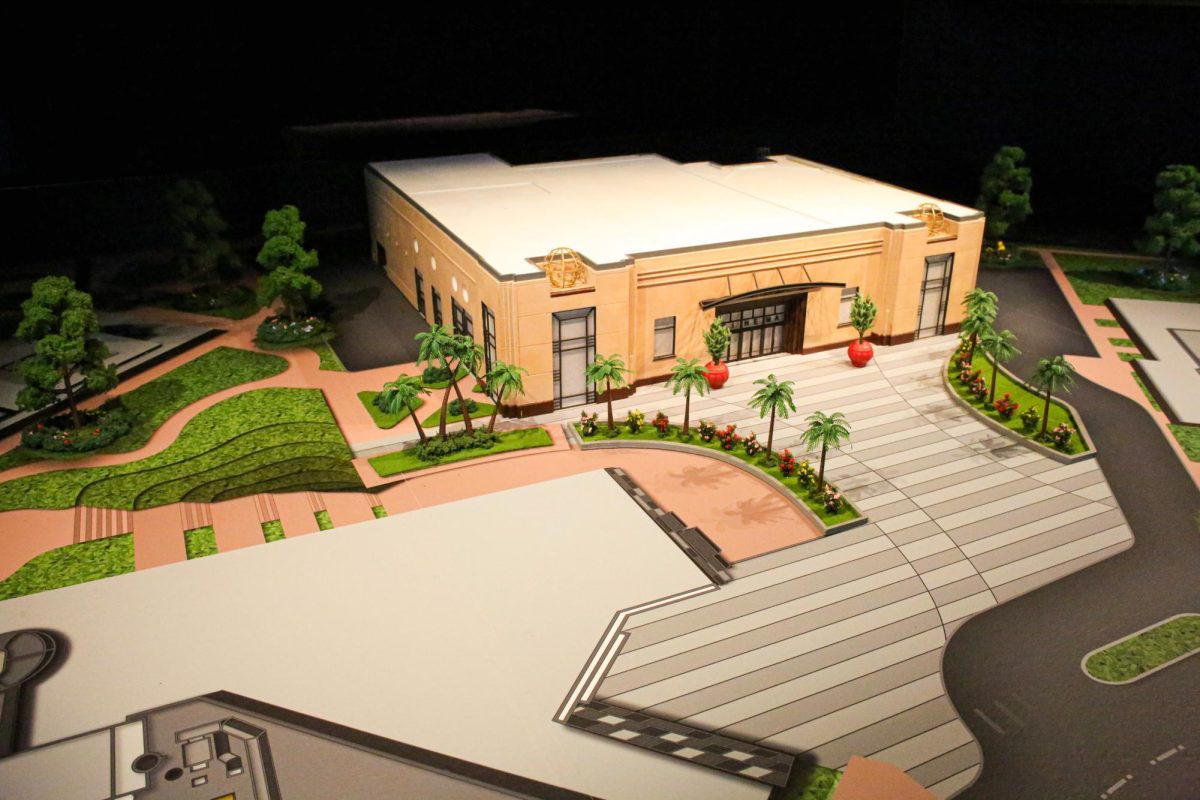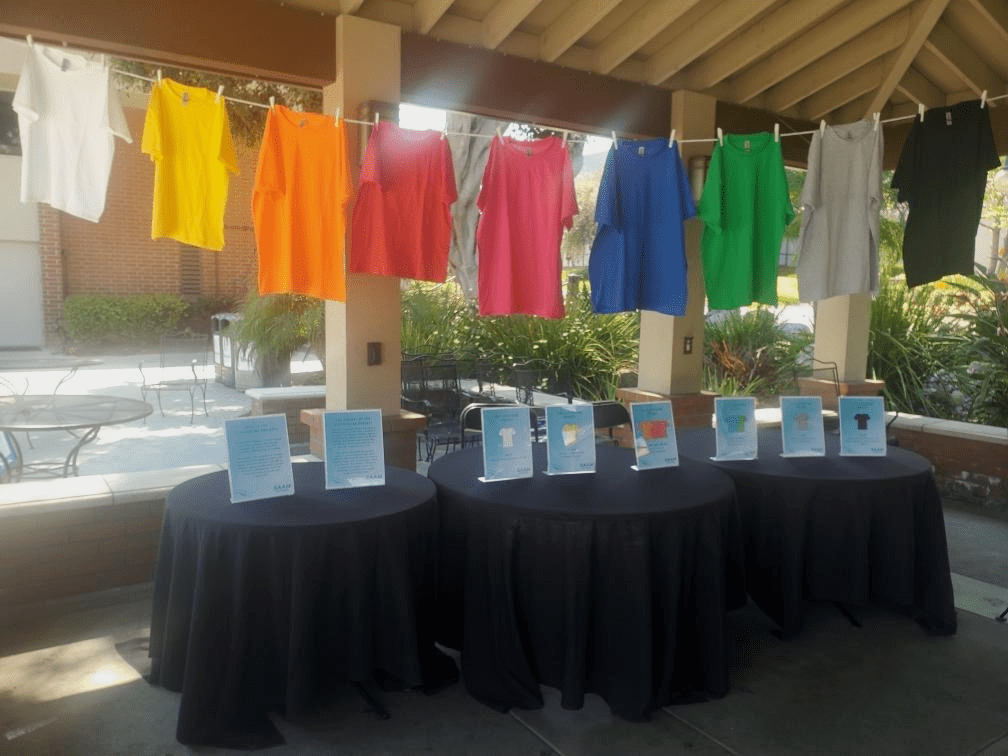Correction: March 8
An earlier version of this article incorrectly stated that the School of Humanities and Social Sciences laid off a Sociology faculty member. He was laid off from a separate staff position at the university but remains as an adjunct with the Sociology department.
The structure of higher education is rapidly shifting in response to the impending enrollment cliff, a steep decline in the amount of traditional college-aged students expected in 2025. Financial realities leave current college students, high school students and parents questioning the importance of higher education, let alone a degree attained at a comparably high ticket price.
“We have also seen a decrease in enrollment over the past few years due to fewer graduating high school seniors and fewer people attending college for various reasons,” Michael Pierce, the vice president of university operations and finance, said in an email statement to the Chimes.
Administration has implemented many changes this semester to adapt to the steadily dropping enrollment numbers but has been working on alterations since the fall of 2022. Biola’s financial and enrollment status influenced administrators to work for solutions that initiated radical changes, which included a wave of staff and faculty layoffs. In December 2022, Biola’s Communication team announced that the administration would discontinue two programs, the Bachelor of Arts in Interdisciplinary Studies and the Masters of Arts in Public Relations and Strategic Communication, in the spring 2023 semester.
FINANCIAL STATUS
As the nation enters a new, hard-hitting economic era, Biola has experienced a hit with the effects of inflation. Biola’s status as a tuition-driven institution leaves it heavily reliant on student enrollment, which has been on a decline. In the university’s 2021-22 fiscal report, data shows that 60.2% of the university’s dollar comes from student tuition and fees.
Over the years, Biola has strategically improved the university to appeal to more students. Improvements included the construction of Blackstone Hall and the new Alton & Lydia Lim science center. It is common for institutions like Biola to take out debt to finance improvements. According to Pierce, Biola’s total debt is $109,430,000 as of August 2022. Biola’s current assets total just over $400 million, according to the university’s fiscal report, creating a healthy debt-to-asset ratio.
“The debt was taken out over time to build facilities, primarily dorms and one parking structure,” Pierce said in his email response to Chimes questions. “We do not take out debt for day-to-day operation purposes.”
STAFF & FACULTY CUTS
As Biola begins to experience a hit in enrollment, the administration has taken action to balance staff and faculty in accordance with the student population. Pierce stated that layoffs are not in correlation with Biola’s debt, but rather a decline in enrollment and escalating costs.
The cutbacks occurring within the university are proportional to enrollment, placing a strain on smaller programs.
“Some decisions were made to lay off or release faculty based on current and projected enrollment in certain majors,” Pierce said in his email response to Chimes questions. “It wasn’t school-specific as much as it was program-specific.”
The university began to make changes in staff and faculty as a step toward building an $8 million budget for the 2023-24 school year, according to Brenda Velasco, senior director of university communications.
“In December 2022, we made the very difficult decision to reduce the number of employees we have on campus as we evaluated our short-term and long-term financial picture,” Pierce said in an email statement to the Chimes.
According to Velasco, a total of 41 staff members were notified that their employment would not be renewed and would officially be laid off on Feb. 1. Along with that, 14 faculty members were informed by the deans of their schools that their contracts would not be renewed, making the 2022-23 school year their last.
“The university is right-sizing the university to its current student population,” Velasco said in an email response to Chimes questions. “This requires the university to have fewer staff and faculty with a shrinking student population.”
Rosemead School of Psychology was one of the schools affected by the wave of changes. Doug Daugherty, dean of Rosemead School of Psychology, announced in an email that a 12-year staff member, a receptionist for Rosemead, would be leaving on Feb. 1. Daugherty attributed this action to the “challenging financial season” that Biola is facing. The School of Fine Arts and Communication also diminished its staff by parting ways with two part-time staff members — a part-time administrative assistant in public relations and a part-time administrative assistant in journalism.
Adjustments to the School of Fine Arts and Communication include staff cuts and full-time faculty layoffs. In an email sent out to SoFAC students, Todd Guy, dean of the School of Fine Arts and Communications, announced changes that would be coming to the program including the departure of faculty members in the Department of Digital Journalism and Media and a faculty member in the Department of Public Relations and Strategic Communications, leaving only one professor in the PRSC program. Their employment will end in May.
Biola Conservatory of Music announced in an email that it intends to consolidate two-full time faculty positions. This means that one person will be tasked with the role of what was once a two-person job. According to the plan provided by Dr. Robert Denham, the interim chair for the Conservatory of Music, it is expected that the roles of the Symphonic Winds and the roles linked with Music Education will be combined. Two faculty members in the Conservatory of Music will not have their contracts renewed.
Pierce shared that to meet the budget requirements, the goal is to cut around 120 employees. The university, however, hopes to stop further cuts.
“It is our hope that the remaining will be accomplished by not filling open positions, as opposed to laying off more employees,” Pierce said in an email university statement.
According to student sources in the Talbot School of Theology, Cook School of Intercultural Studies, the School of Cinema and Media Arts and the School of Science, Technology and Health, no news of program changes have been openly communicated with them.
Leanne Dzubinski, acting dean of the Cook School of Intercultural Studies, June Hetzel, dean of the School of Education and Melissa Schubert Johnson, dean of the School of Humanities and Social Sciences, declined to release information regarding changes within the schools and suggested speaking to the Office of Human Resources.
ENROLLMENT CLIFF
Universities all around the country have been suffering the consequences of the enrollment cliff. Though enrollment disparities have occurred for multiple years, enrollment in 2025 will evidently drop significantly nationwide — including at Biola University.
In 2019, the College and University Professional Association for Human Resources said, “Many higher ed institutions will face declining or stagnant student enrollment beginning in about six years, a reality which will require a thoughtful, strategic approach to ensure the viability and sustainability of those institutions.”
Biola has already started to experience a slow trend toward an enrollment cliff, despite the decline being originally predicted to occur within the next two to three years.
Over the past 15 years, Biola maintained an enrollment total that ranged between five thousand and six thousand students. Biola’s Office of University Analytics shows in its online report that at its peak, in 2014, the university had a total of 6, 358 students enrolled — 4,373 undergraduate students and 1,985 graduate students.
In 2019, before the pandemic, Biola was experiencing enrollment declines, with a total of 6,172 — 4,048 undergraduate students and 2,124 graduate students. Then in 2020, the enrollment dropped to 5,816 students —3,682 undergraduate students and 2,134 graduate students. Enrollment in 2021 experienced another drop, with 5,555 enrolled students — 3,596 undergraduate students and 1,959 graduate students.
In the fall of 2022, Biola experienced its lowest enrollment number in the past 15 years. The fall semester enrollment was 5,387 students — 3,499 undergraduate students and 1,888 graduate students.
Trends show a steady decline in enrollment that may follow into the next few years. In March 2022, the President’s Administrative Council prepared for the impeding enrollment cliff, forecasting a seven-year decline in enrollment.
NATIONWIDE UNIVERSITY CHANGES
Changes in university structures have been evident nationwide. In an article published by Forbes in the first week of February 2023, it is explained that all universities experienced a decline with varying degrees of impact.
The research included in that article showed that Michigan, Washington, Vermont and California had the largest decrease in enrollment, with California’s decline being 8.1%. Data released by the National Student Clearinghouse Research Center stated that enrollment for private nonprofit four-year universities was at -0.9% as of October 2022, when the previous fall semester had been at -0.2%.
Christian universities and colleges have adapted similarly to Biola. Wheaton College, a private college in Illinois, announced changes similar to what Biola is experiencing. In November 2022, the college announced a reduction of its staff and faculty and restructuring of selective academic programs and adjustments to its budgets.
“Financial concerns triggered by a post-COVID enrollment deficit are the main cause of the academic restructuring,” said Noah Cassetto, Noelle Worley and Helen Huiskes in an article published by The Wheaton Record, a student-run publication.
According to its student news publication The Falcon, Seattle Pacific University plans to reduce programs and faculty by 2025 in a financial adjustment. Azusa Pacific University, according to its 2021 budget sheet, began making changes — furloughs, salary reductions and benefit reductions.
BIOLA’S FUTURE
With the future of higher education changing, Biola has been looking for ways to stay ahead and plan for what is next.
“Moving forward, Biola’s leadership is committed to exercise managerial discipline with every new hire — whether faculty or staff — to ensure we do not keep growing our personnel costs disproportionate to our student population,” Velasco said in a university statement. “This may mean that a decision to fill new positions will be offset with the elimination or consolidation of an open position. In addition, faculty renewals and non-renewals will be based on academic program growth, program contraction and the essence of programs to our mission as a comprehensive university with a rich Christian liberal arts and biblical studies core.”
According to Pierce, Biola continues with a goal to provide a quality Christian education to students with the most affordable tuition.
“Although of late it has been a slog financially, I have never believed more in Biola’s mission, future and substance,” said Barry Corey, president of Biola, said in a university statement. “We have what the world needs: Christian students who embody a profound sense of Christ’s love, a zeal for the truth of Scripture, vocational formation that will serve them for a lifetime and friendships within this beloved community to assure them they will not journey alone.”












